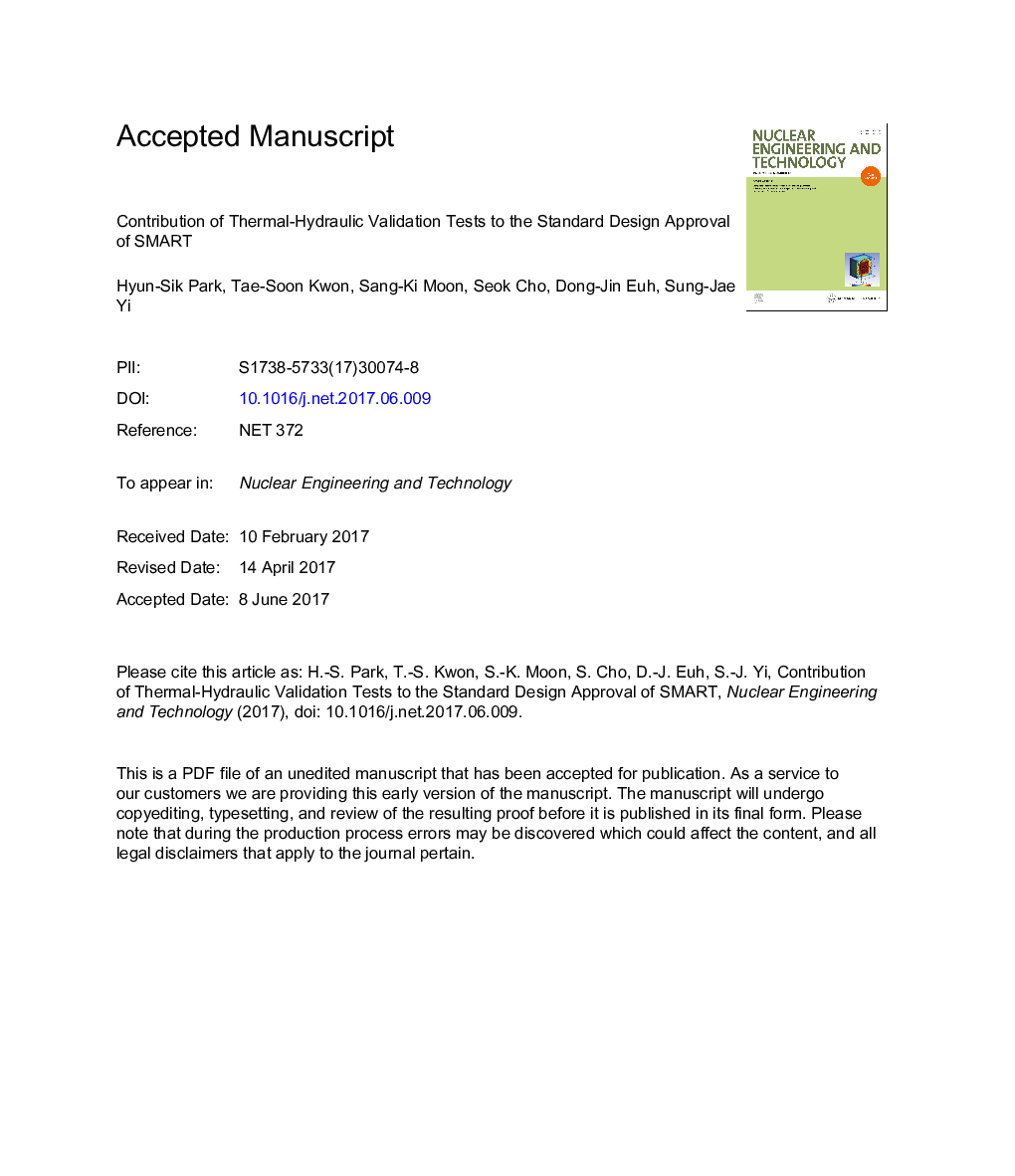| Article ID | Journal | Published Year | Pages | File Type |
|---|---|---|---|---|
| 8084024 | Nuclear Engineering and Technology | 2017 | 17 Pages |
Abstract
Many thermal-hydraulic tests have been conducted at the Korea Atomic Energy Research Institute for verification of the SMART (System-integrated Modular Advanced ReacTor) design, the standard design approval of which was issued by the Korean regulatory body. In this paper, the contributions of these tests to the standard design approval of SMART are discussed. First, an integral effect test facility named VISTA-ITL (Experimental Verification by Integral Simulation of Transients and Accidents-Integral Test Loop) has been utilized to assess the TASS/SMR-S (Transient and Set-point Simulation/Small and Medium) safety analysis code and confirm its conservatism, to support standard design approval, and to construct a database for the SMART design optimization. In addition, many separate effect tests have been performed. The reactor internal flow test has been conducted using the SCOP (SMART COre flow distribution and Pressure drop test) facility to evaluate the reactor internal flow and pressure distributions. An ECC (Emergency Core Coolant) performance test has been carried out using the SWAT (SMART ECC Water Asymmetric Two-phase choking test) facility to evaluate the safety injection performance and to validate the thermal-hydraulic model used in the safety analysis code. The Freon CHF (Critical Heat Flux) test has been performed using the FTHEL (Freon Thermal Hydraulic Experimental Loop) facility to construct a database from the 5Â ÃÂ 5 rod bundle Freon CHF tests and to evaluate the DNBR (Departure from Nucleate Boiling Ratio) model in the safety analysis and core design codes. These test results were used for standard design approval of SMART to verify its design bases, design tools, and analysis methodology.
Related Topics
Physical Sciences and Engineering
Energy
Nuclear Energy and Engineering
Authors
Hyun-Sik Park, Tae-Soon Kwon, Sang-Ki Moon, Seok Cho, Dong-Jin Euh, Sung-Jae Yi,
